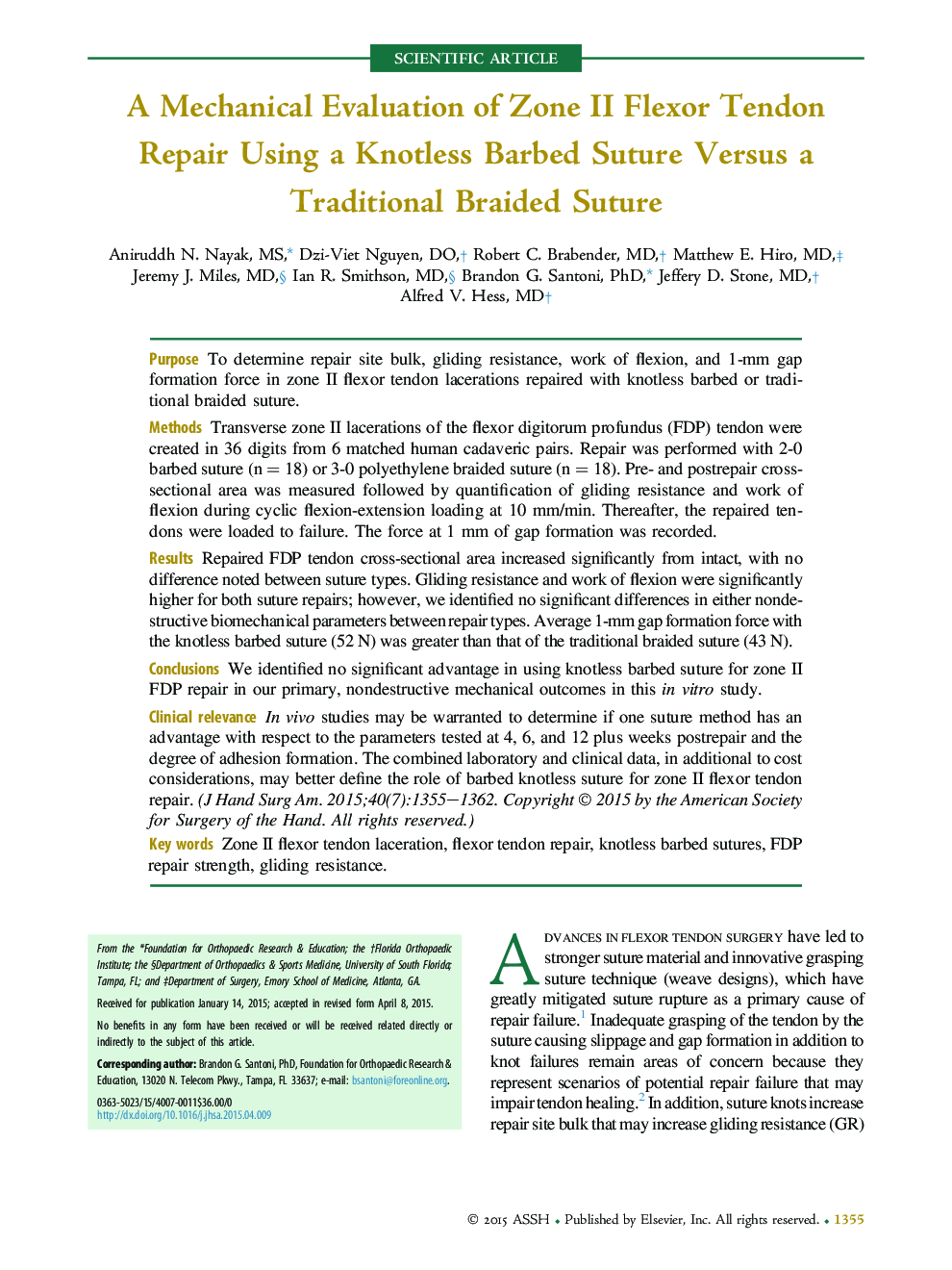| کد مقاله | کد نشریه | سال انتشار | مقاله انگلیسی | نسخه تمام متن |
|---|---|---|---|---|
| 4066626 | 1604355 | 2015 | 8 صفحه PDF | دانلود رایگان |

PurposeTo determine repair site bulk, gliding resistance, work of flexion, and 1-mm gap formation force in zone II flexor tendon lacerations repaired with knotless barbed or traditional braided suture.MethodsTransverse zone II lacerations of the flexor digitorum profundus (FDP) tendon were created in 36 digits from 6 matched human cadaveric pairs. Repair was performed with 2-0 barbed suture (n = 18) or 3-0 polyethylene braided suture (n = 18). Pre- and postrepair cross-sectional area was measured followed by quantification of gliding resistance and work of flexion during cyclic flexion-extension loading at 10 mm/min. Thereafter, the repaired tendons were loaded to failure. The force at 1 mm of gap formation was recorded.ResultsRepaired FDP tendon cross-sectional area increased significantly from intact, with no difference noted between suture types. Gliding resistance and work of flexion were significantly higher for both suture repairs; however, we identified no significant differences in either nondestructive biomechanical parameters between repair types. Average 1-mm gap formation force with the knotless barbed suture (52 N) was greater than that of the traditional braided suture (43 N).ConclusionsWe identified no significant advantage in using knotless barbed suture for zone II FDP repair in our primary, nondestructive mechanical outcomes in this in vitro study.Clinical relevanceIn vivo studies may be warranted to determine if one suture method has an advantage with respect to the parameters tested at 4, 6, and 12 plus weeks postrepair and the degree of adhesion formation. The combined laboratory and clinical data, in additional to cost considerations, may better define the role of barbed knotless suture for zone II flexor tendon repair.
Journal: The Journal of Hand Surgery - Volume 40, Issue 7, July 2015, Pages 1355–1362